Firefighter Workout Plan (Detailed Strength Training Program)
Author:
Reviewed by:
(21 years of Oly Lifting experience)
Unlock your full potential by engaging with our experts and community! Have questions about your fitness journey or looking for expert advice on weightlifting techniques? Don’t hesitate — leave a comment below and Sergii Putsov will provide a personalized answer and insights to help you reach your goals.
Torokhtiy is reader-supported. Some links are affiliate links, and we may earn a commission at no extra cost to you. See our disclosure page for details.
Whether your goal is to build stamina, strength, endurance, and power to scale through demanding situations or attain a higher fitness level, a firefighter workout plan is an excellent choice.
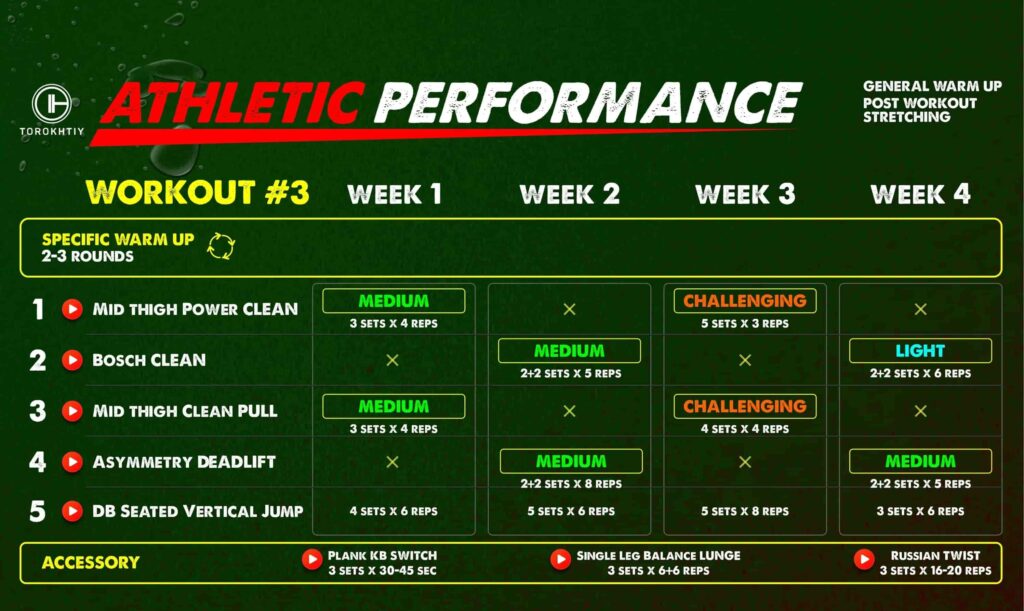
Contrary to popular belief, a fighter workout plan is not only meant for firefighters or those taking the career path.
Since firefighters are professionally trained to enhance their performance and reduce the chances of injuries while carrying out their responsibilities, it’s important to note that a fighter workout training takes time and requires a high degree of discipline and commitment to improving your overall health.
In this article, we will define a firefighter workout plan, its benefits, examples of strength training exercises, and key factors of a firefighter’s strength training routine.
We will also cover firefighter’s strength training programs, the basic types of equipment required, and a few frequently asked questions.
A firefighter workout plan consists of an active warmup, core and strength training. A warm up improves the body’s flexibility and increases heart rate and blood flow. Core training enhances hip, shoulders, and trunk stability. Strength training improves the strength of the muscles.
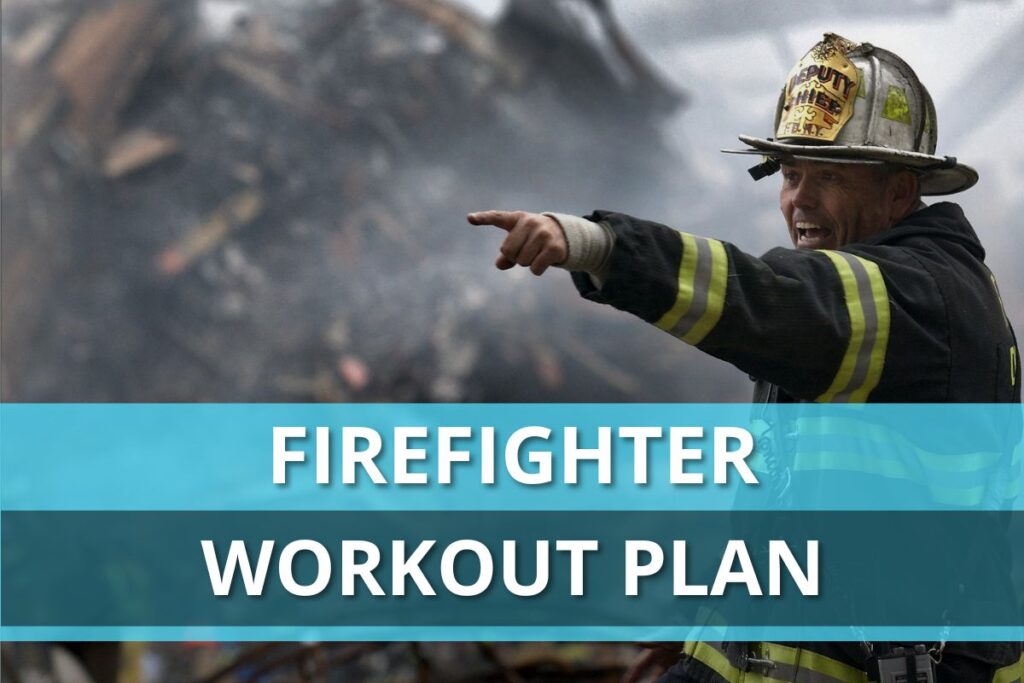
What’s Firefighters Workout Plan?
Firefighters’ workout plan is designed to meet the physical demands, fitness levels, and skill sets of firefighters. The ultimate goals of firefighters’ workouts are to improve performance and reduce the chances of injuries while performing their duties.
A workout plan for firefighters targets the chest, biceps, triceps, legs, shoulder, glutes and back muscles.
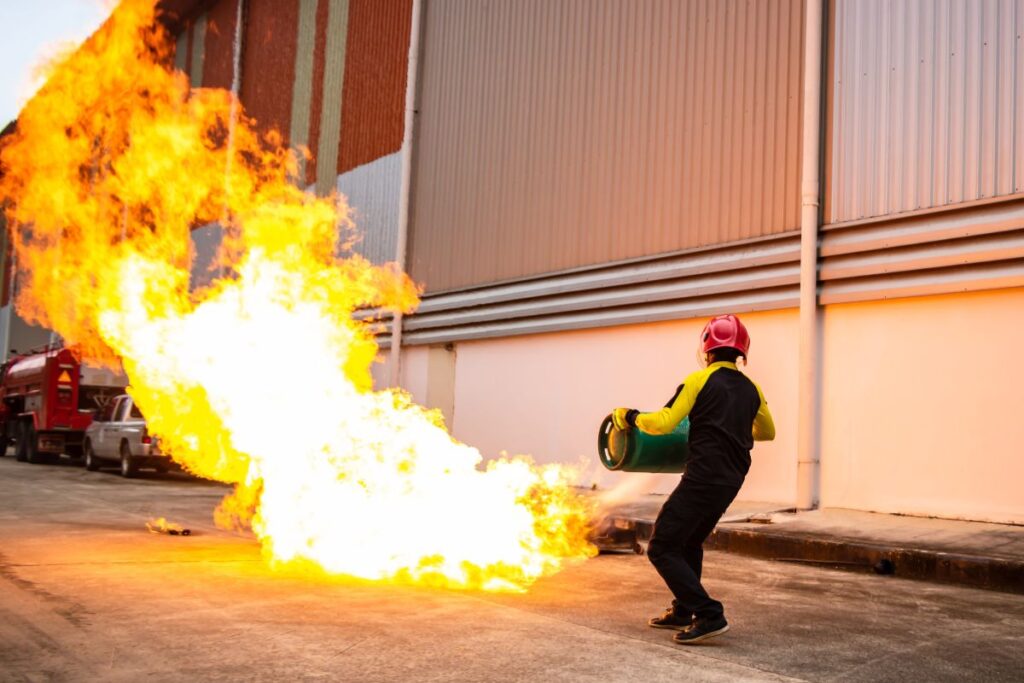
It consists of a combination of exercises such as active stretching movement, press, pull-up, squat, one arm, row, and activities involving a stability ball, a plate, or a dumbbell. These exercises improve the functioning of the nervous system, protect against injuries, enhance the mobility and flexibility of the muscles, and protect the body from injuries.
Benefits of Strength Training For Firefighters
The main benefits of strength training for firefighters include improving fitness levels, the flexibility of the body, stability of the joints, functioning of the heart, coordination, balance, and strength of the muscles.
Here are the in-depth benefits of physical training for firefighters:
Enhance Performance
Consistent and effective strength training programs improve the foreground performance of firefighters. Furthermore, it generally enhances their athletic performance.
A study reveals that greater muscular strength is strongly linked to improved force-time characteristics contributing to overall athletic performance. More studies suggest that greater muscular strength enhances the ability to perform general sports skills such as jumping, sprinting, and change of direction.
Fight Stress and Anxiety
The nature of a firefighter’s job is stressful. Therefore, physical training for firefighters helps to calm you down and combat symptoms of stress, anxiety, mild depression, and PTSD.
Studies show that resistance training reduces symptoms of stress and anxiety.
Improve Fitness Levels
Strength training burns calories, leans fat, and increases metabolism. This results in an increased fitness level.
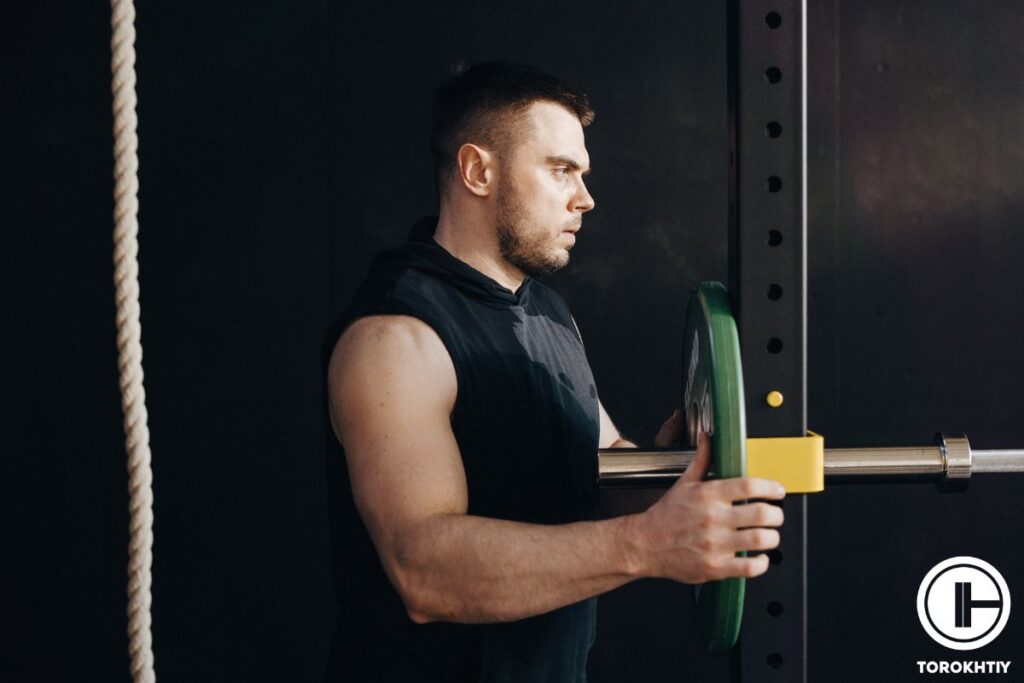
Research demonstrates that resistance training reduces abdominal fat. More studies show that resistance training increases resting metabolic rate (RMR).
Improve Cardio Health
During firefighter weight training exercises, your heart rate increases as your heart pumps more blood. This improves the circulation of blood in your body. As your muscle mass increases, strength training creates space for blood to be pumped. This reduces the pressure on the arteries and the chances of developing heart-related issues.
Clinical trials suggest that strength training improves cardiovascular health by decreasing total cholesterol (TC), high-density lipoprotein (LDL), and blood pressure.
Improve Overall Health
Strength training enhances endurance and brainpower. In addition, strength training improves your bone density, reducing the risk of severe injuries and bone-related diseases such as osteoarthritis and osteoporosis.
Since fireman workouts training targets several groups of muscles in your body, it improves the mobility and flexibility of your bones. This translates to improved coordination and balance.
Strength training benefits your long-term and overall well-being.
Studies show that resistance training positively affects health-related quality of life.
Prevent Injuries
Strength training plays a vital role in injury prevention and injury prevention programs for firefighters. This is because strength training enhances the strength and flexibility of the muscles, ligaments, bones, and tendons. Stronger muscles protect the body from any form of impact. This helps the body to absorb shocks during movements better.
Research shows that strength training reduces the risk of injuries. More studies reveal that resistance training improves joint flexibility.
Improve Immunity
Since strength training for firefighters increases blood flow, this encourages more immune cells, especially specialized cells that target pathogens such as natural killer cells and T cells, to flow in the body.
This increases the body’s immunity response, resulting in a low chance of diseases and inflammation.
Improve Resiliency and Stability
Strength training helps improve your resiliency and stability. This enables you to better adapt to adversity, trauma, tragedy, and scale through sources of stress and demanding situations.
Findings from a study suggest that resistance training improves resiliency in older adults.
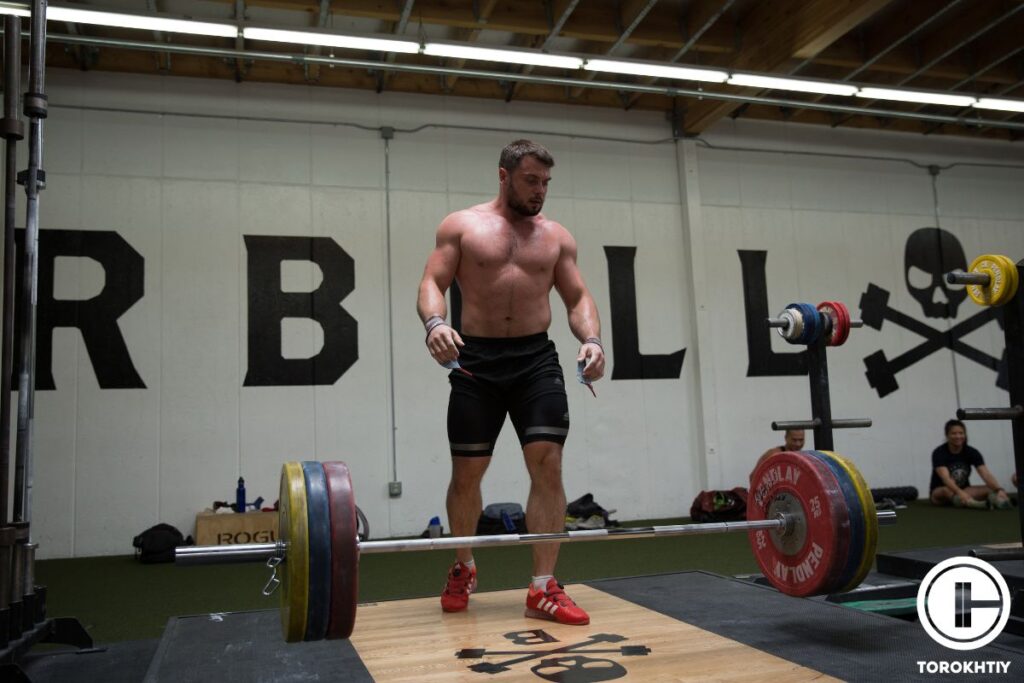
Strength Training Exercises for Firefighters
Strength training exercises for firefighters include dumbbell chest, goblet squat, pull up, push up, one-arm row, etc.
If you are newly performing a firefighter workout routine, you need to start light to avoid hurting your muscles. Here are in-depth details of strength training exercises for firefighters:
Dumbbell Chest Press
The dumbbell chest press is a firefighter exercise that works on the chest, shoulders, and triceps.
To perform it, you need to sit on an incline (set to 45 to 60 degrees) seat. Keep two dumbbells on your knees. In slow motion, lie on your back, carrying up the dumbbells to your chest level. Brace your spine and tighten your glutes, then slowly lower the weight of the dumbbell, monitoring the wrist position over the elbows. Take a brief break when your arms move to the bottom, and then bring your hands together.
Position your feet on the floor and avoid arching your back during the movement. Perform repetitions at a slow but steady pace.
Squat With Press
Squat with the press is a firefighter exercise that works on the total body muscles.
To perform it, hold two dumbbells (one for one hand) with palms facing in. Tighten your abs as you squat in slow motion. Bend your knees and hips low and only stop at an uncomfortable position.
Lift yourself up, clasp the dumbbells above your head, stop briefly, and move them close to your shoulders. Avoid arching your back or allowing the weight to propel you forward during the movement. Repeat the procedure.
Captain Morgan Curls
Captain Morgan Curls is an exercise that works on the biceps, hips, core, glutes, and forearms group of muscles.
To perform it, take a standing position with dumbbells in your hands and your palms facing forward. Keep one of your legs on an object with a mid-thigh height (e.g., a bench) and slowly shift your weight forward. Ensure to involve the core and tighten the glutes, then slowly flex your elbows while carrying the dumbbells up to your chest. Position your palms to face forward and your shoulder blades in neutral.
Move at a slow but steady pace. Repeat the procedure with the other leg up.
Seated Cable Row
The seated cable row works on the back and shoulder blade muscles.
First, grasp the handle, place your feet on the pedals, propel your abs tight, and then sit up straight. The cable should have resistance. While maintaining a straight posture, slowly pull the handle to your chest. Place your head back and shoulders down during the motion. When you pull the handles to your chest, stop and then slowly return the handles until your arms are straight. You can only let go of the handle after the last repeat. Repeat the procedure.
Walking Lungs – Hold Weights
Walking lungs is an exercise that targets and strengthens the glutes, hamstrings, hips, and leg muscles.
To perform it, hold two dumbbells (one for one hand) with palms facing in. Propel your abs tight as you step forward in slow motion. Bend at the hip, knee, and ankle. Keep your back knee toward the ground, but don’t allow it to come in contact. Stop for a second and propel through the set foot to go back to the starting spot. Keep your head and shoulders straight, and do not lean forward.
Triceps Cable Pushdown
Triceps cable pushdown is a firefighter gym workout that targets and strengthens the triceps muscles.
To begin, stand in a proper posture (i.e., straight), and grasp the cable handle with palms fronting the floor. Tighten your abs and glutes and pull the cable bar towards your thigh. Stop at the end of the motion, and allow your triceps to contract, then slowly return the cable bar to the starting position.
Always maintain a good posture at a slow but steady pace, and do not move your shoulders at any point. Repeat the procedure.
Goblet Squats
Goblet Squats work on the full-body muscles.
To begin, hold a dumbbell vertically in front of your chest with a slightly wider than shoulder-width space. Position your back in a natural position, propel your hips behind, bend your knees, and bring down your body until your thighs and the ground are parallel. Stop, then propel yourself up as you started earlier. Your elbows should face the ground, and keep your trunk (torso) in a straight position at any time during the exercise.
Step-Ups
Step-ups are an exercise that works on the leg muscles, including the Gluteus Maximus and Quadriceps.
To perform it, put the foot of one of your legs on a raised platform (i.e., bench) while holding two dumbbells (one to one hand). Your palms should face the side of your legs. Climb on the bench by stretching out the hip and knee of the first leg and place the foot of the second leg on a raised platform.
Climb down with the second leg by moving the hip and knee of the first leg. Go back to the starting position by placing the foot of the first leg on the floor. Repeat the procedure on one leg, and then with the same number, do the procedure with the other leg.
Key Factors in Firefighters’ Strength Training Routine
Many people incorporate firefighter strength training into their workouts without considering several factors, such as active warmup, core training, interval overhauls, and cardio interval training.
These factors affect the effectiveness and efficiency of a firefighter workout routine.
Here is in-depth information about them:
Active Warmup
Before starting firefighter weight training, you should engage your body with an active warmup. Warmup provides value to your body in a short time. It makes your body ready for movement, boosts heart rate, regulates core temperature, and enhances blood circulation. In addition, movement during warmup sessions improves the functioning of your nervous system.
The warmup is so vital that many professional athletes do it. If you watch football, you must have seen football players hopping around the pitch and stretching their bodies before kick-off.
The long-term goal of the warmup routine is to improve the mobility and flexibility of your muscles against your resistance strength workout.
Core Training
Core training is another essential element of firefighter strength training. It helps to protect the body, especially the back and joints, from injury.
Research by the Miami-Dade County Fire Rescue Department shows that 55% of their members experience low-back pain. Furthermore, 86% of members reported low-back pain in their past medical records.
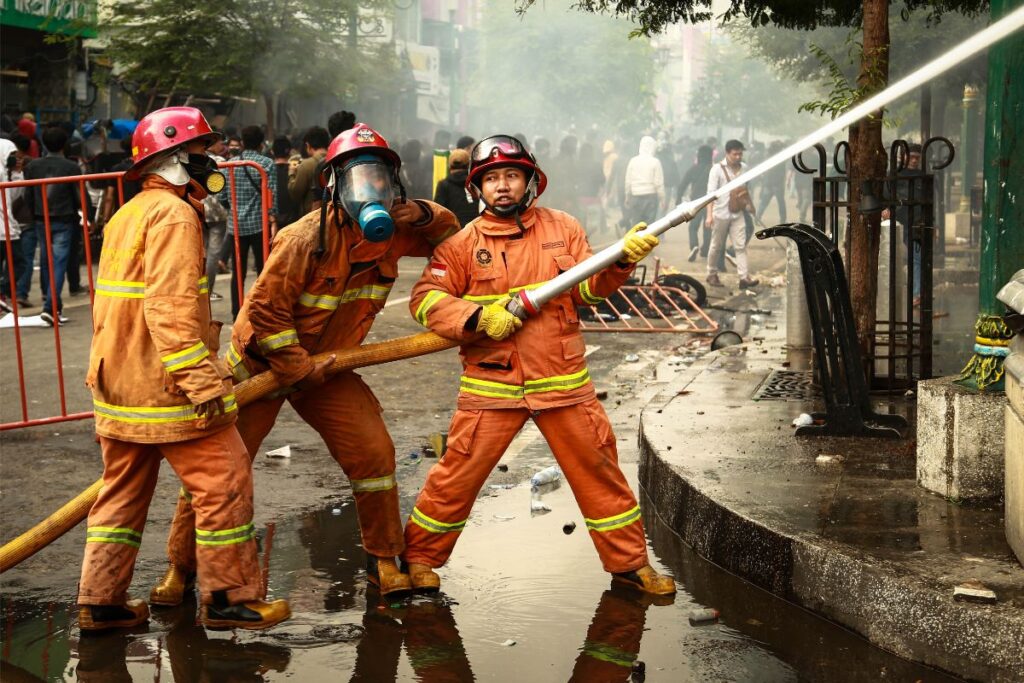
Lower back pain is often attributed to physical deconditioning. Therefore, that’s why it’s crucial to incorporate it into your training routine.
To get the best results from your strength training routine, you need to perform a warmup and a core exercise.
Examples of core exercise are ball crunches (targets the core), hip extension feet on a stability ball (targets the back and glutes muscles), opposite arm/leg raise (targets the shoulders and low back).
Interval Overhauls
Interval overhauls help to improve firefighter skills and work on the ground. A 10 minutes overhaul is always recommended for those performing firefighter strength exercises.
The three interval overhaul options are incline treadmill, sledge o’ matic, and stairs. Interval overhauls should be performed after the strength training session.
Cardio Interval Training
This helps the body to function under high intensity and pressure. In addition, it burns calories and body fat.
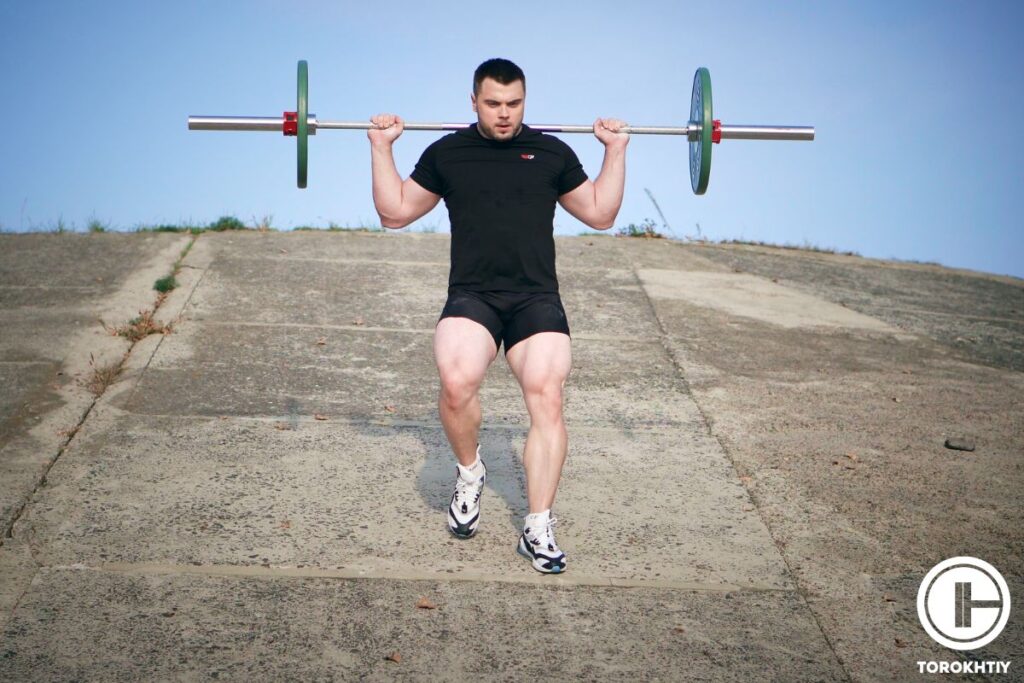
Cardio interval training should be performed in-between strength training workouts.
Follow us!

Free!
Get a 2-week Weightlifting Program as a bonus for the subscription to kickstart your training plan!

Free!
Firefighters’ Strength Training Programming
The firefighter workout program provides a guide for those looking to work on and strengthen several muscles in their body. Before starting the program, it’s best to consider your age, health, current fitness level, past training lifestyle, and history. You may require a good fitness level, or you can build up one; this takes time.
We offer you a 3-day training program that is geared towards firefighters.
Day 1: Upper Body Strength and Endurance
1. Dumbbell Chest Press: 4 sets x 8 reps
Focus on controlled movement and steady tempo
2. Asymmetry Bench Press: 3 sets x 8 reps per side
Balance each side’s movement
3. Seated Cable Row: 4 sets x 10 reps
Emphasize strong scapular retraction and control
4. Triceps Cable Pushdown: 3 sets x 12 reps
Use a moderate weight to avoid momentum
Day 2: Lower Body Strength and Explosiveness
1. Goblet Squats: 4 sets x 10 reps
Focus on depth and stability
2. Step-Ups: 3 sets x 8 reps per leg
Use controlled movement with a moderate weight
3. Walking Lunges: 3 sets x 10 reps per leg
Emphasize full range of motion and balance
4. Barbell Squat Jump: 3 sets x 5 reps
Focus on explosive movement with soft landing
Save it for easy access!
Bookmark this page now to access the program and instructional videos anytime, anywhere.
Stop wasting time searching during your gym sessions.
Day 3: Core and Functional Training
1. Squat With Press (Thruster): 4 sets x 8 reps
Combine depth in the squat with strong overhead press
2. Captain Morgan Curls: 3 sets x 10 reps per side
Emphasize balance and stability
3. Landmine Rotations: 3 sets x 8 reps per side
Focus on explosive rotation with control
4. Atomic Lunge: 3 sets x 10 reps per side
Emphasize balance and control
Volume and Intensity Guidelines:
Warm-Up: Start each session with dynamic mobility exercises.
Rest Intervals: Take 2 minutes between sets for compound lifts, 1 minute for accessory work.
Load: Start at 60% of maximum capacity and increase weekly by 5-10 lbs.
Accessory Exercises: Use moderate weights and focus on form and stability.
Basic Equipment You Need
Dumbbells, a bench, an exercise mat, a stability ball, and a lat pull-down machine are some pieces of equipment you need to perform your firefighter workout sessions.
FAQ
What Lifts Are Best for Firefighters?
Since a fighter uses the glute muscles more than any other muscles for foreground operations, it’s best to incorporate workouts targeting the glute.
Does Weightlifting Help Firefighters?
Weightlifting helps fighters work on several muscles in their body, improving their foreground operations, survival skills, and injury prevention.
How Often Should a Firefighter Lift Weights?
A firefighter should lift weights at least three times a week to maintain their fitness level and improve their foreground operations, stamina, and flexibility.
Conclusion
A firefighter’s workout plan is designed for firefighters. Even those desiring to work on several muscles and build strength will find it helpful.
Before incorporating any fireman workout, it’s essential to consider your health, fitness level, age, past medical history, and goals.
To avoid developing pain, it’s best to add warmup, core strength and interval overhauls, and cardio conditioning to your fighter’s strength training workout.
Have you done any firefighter workouts before? Which is your preferred firefighter strength workout? What’s your favorite workout time? How long is your firefighter workout routine? Or a general workout session? I’ll await your response in the comments.
Also read:
- Strength Training for Boxers
- Strength Training for Soccer Players
- Weightlifting for Sprinters
- Wrestling Weightlifting Program
- Weight Lifting for Cyclists
- Rowing Strength Training Routine
- Strength Training Plan for Runners
- Swimmer Strength Training
- Weight Bench Guide
References:
- Photos by Torokhtiy Media Team; Ibnu Maulana, Pexels; 12019, Pixabay; KaweewatT, Pixabay.
Why Trust Us?
With over 20 years in Olympic weightlifting, strength training, nutrition coaching, and general fitness our team does its best to provide the audience with ultimate support and meet the needs and requirements of advanced athletes and professional lifters, as well as people who strive to open new opportunities and develop their physical capabilities with us.
By trusting the recommendations of our certified experts in coaching, nutrition, and sports training programming, as well as scientific consultants, and physiotherapists, we provide you with thorough, well-considered, and scientifically proven content. All the information given in the articles concerning workout programming, separate exercises, and athletic performance, in general, is based on verified data.
The product testing process is described in more detail here.
Author: Sergii Putsov
Head of Sport Science, PhD
Best Results: Snatch – 165 kg,
C&J – 200 kg
Sergii Putsov, Ph.D., is a former professional weightlifter and National team member, achieving multiple medals in the 94 kg weight category at national competitions. With a Master’s degree in “Olympic & Professional Sport Training” and a Sport Science Ph.D. from the International Olympic Academy, Greece, Sergii now leads as the Head of Sport Science. He specializes in designing training programs, writing insightful blog articles, providing live commentary at international weightlifting events, and conducting educational seminars worldwide alongside Olympic weightlifting expert Oleksiy Torokhtiy.
Reviewed by: Oleksiy Torokhtiy
Olympic Weightlifting Champion, PhD in Sport Science
Best Results: Snatch – 200 kg,
C&J – 240 kg
Oleksiy Torokhtiy is a professional athlete boasting 20 years of experience in Olympic weightlifting. With multiple European and World titles under his belt, he has showcased his prowess in two Olympic Games (Beijing 2008 and London 2012). Upon concluding his illustrious career, Oleksiy dedicated himself to coaching. By 2022, he had conducted over 200 weightlifting seminars worldwide. He is the visionary behind an international sportswear and accessories brand known for its motto, “Warm Body Cold Mind.” Additionally, he is an esteemed author and the creator of a series of training programs and eBooks.




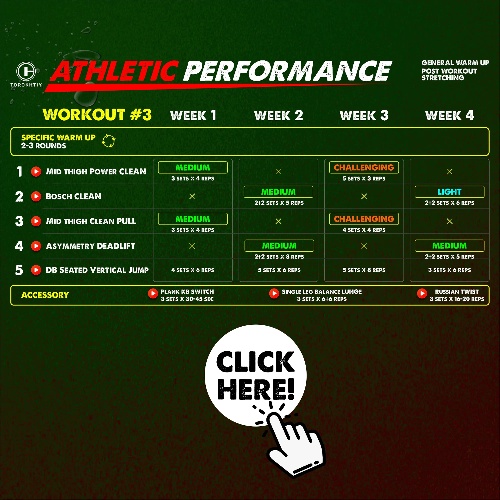


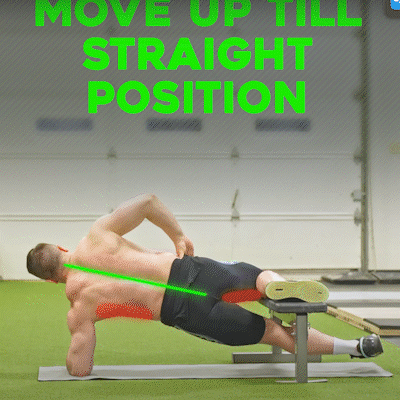
Still have questions after reading our article? Unlock your full potential by engaging with our experts and community! Don’t hesitate — leave a comment below and Sergii Putsov will provide a personalized answer and insights to help you reach your goals.